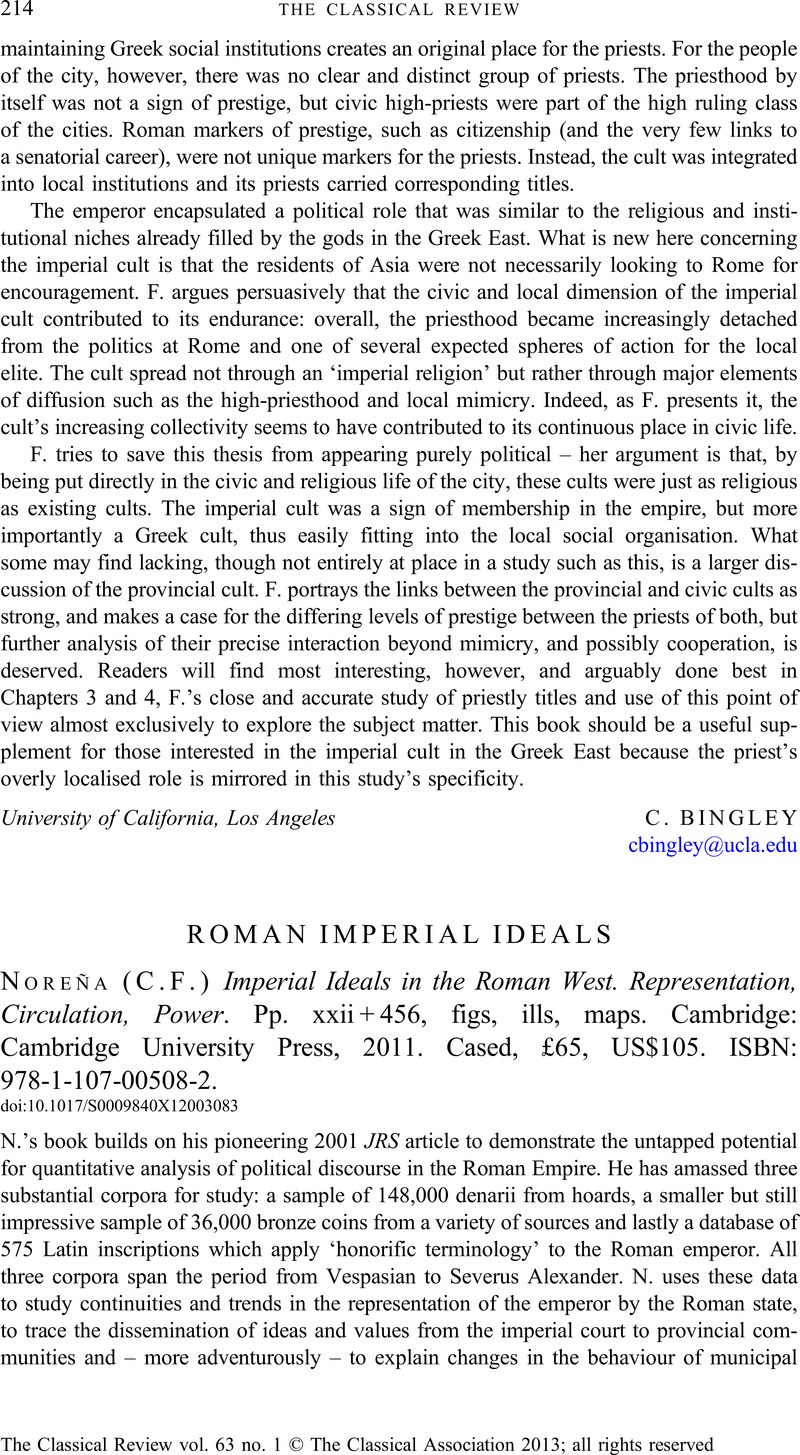No CrossRef data available.
Article contents
ROMAN IMPERIAL IDEALS - C.F. Noreña Imperial Ideals in the Roman West. Representation, Circulation, Power. Pp. xxii + 456, figs, ills, maps. Cambridge: Cambridge University Press, 2011. Cased, £65, US$105. ISBN: 978-1-107-00508-2.
Published online by Cambridge University Press: 01 March 2013
Abstract

- Type
- Reviews
- Information
- Copyright
- Copyright © The Classical Association 2013
References
1 Given its importance for N.'s argument it is worth citing a few examples to illustrate that the proliferation of the term begins much earlier in the second century and that its use by ‘officials’ is not limited to a military context (pace N. at p. 227). As early as the second decade, a recruit writing to the Prefect of Egypt refers to Trajan as (dominus noster) (Speidel and Seider in JEA [1988], 242). Hadrian is called dominus noster both by the imperial freedman from Nacolea (ILS 7196, N.'s no. 72) and on a votive altar which a cavalry prefect erected in Thebes (ILS 8908). Antoninus Pius is styled dominus noster in a letter written by the senator Velius Fidus to a colleague in the college of pontifices (ILS 8380) and dominus imperator on a statue base dedicated by a senatorial legate in Numidia (AE 1958, 585). Fronto, writing to friends, similarly refers to Pius, Marcus and Verus as domini nostri (Ad amicos i. 14 and 18). This is to set aside the more complex question of the use of the vocative domine as early as Pliny's Letters.




